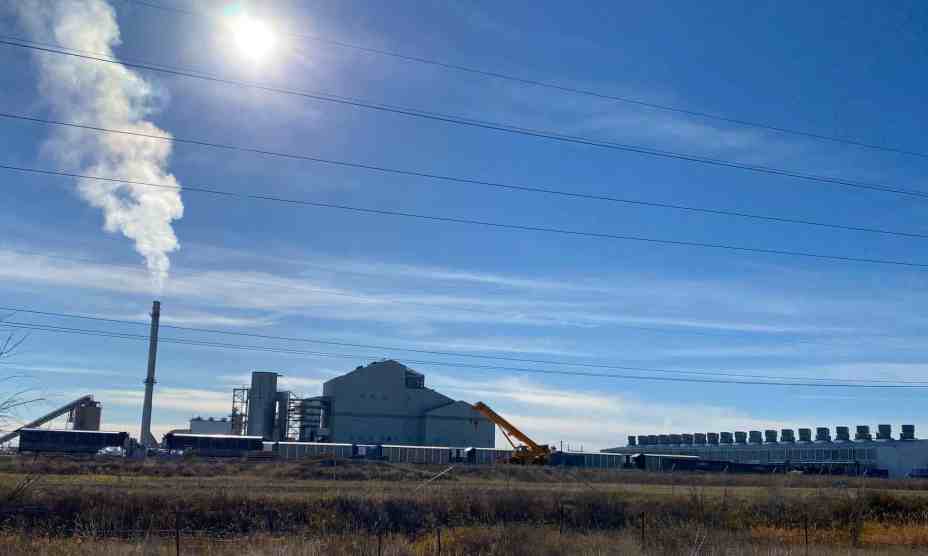
A Bitcoin mining operation.Getty Images
This story was originally published by the Guardian and is reproduced here as part of the Climate Desk collaboration.
The crypto crash will not reduce the sector’s climate impact any time soon, an economist has warned, even though the environmental footprint of digital currencies is in theory set by their market value.
“Unless Bitcoin collapses further, there’s no reason to expect a decrease in environmental impact,” said Alex de Vries, a data scientist at the Dutch central bank and the founder of Digiconomist, which tracks the sustainability of cryptocurrency projects.
His research shows that while the increase in a cryptocurrency’s price encourages more computer capacity to be dedicated to it—increasing carbon emissions—that capacity takes a long time to disappear after the value declines, so the climate impact persists.
Cryptocurrencies work by validating their transactions through huge numbers of “miners” who use their computers to solve extremely complex math problems in exchange for the chance of getting tokens as a reward, in a highly energy-intensive process. De Vries estimates that the Bitcoin network uses about 204 terrawatt-hours (TWh) of electricity per year, around the same as the energy consumption of Thailand and above that of all but 23 sovereign nations.
Other cryptocurrencies add to that footprint: Ethereum, the token that underpins the NFT boom and the “decentralized finance” sector, has an annualized footprint of around 104TWh (equivalent to Kazakhstan, and more than all but 34 nations), while even Dogecoin, a lighthearted spinoff of Bitcoin famed for its community’s positive attitude, consumes an estimated 4TWh annually.
Those figures have barely changed over the past month despite $1 trillion being wiped off the crypto sector, and other measures of the amount of processing power devoted to “mining” similarly show little decline.
All major cryptocurrencies use electrical power in rough proportion to the price of the token because that dictates how much the reward given to miners is worth. For Bitcoin, for instance, the reward for successful mining is 6.25 Bitcoin every 10 minutes—currently, about $210,000.
The higher the value of the reward, the more energy it is worth using to try to win it, ensuring that as the price of Bitcoin rose from $8,000 in October 2019 to $60,000 two years later, the energy use of the sector rose too, from 73TWh to its current high.
But while an increase in the price of cryptocurrency quickly leads to an increase in the carbon emissions of the sector, a crash like the one seen in past month doesn’t do the reverse. “It likely stops the environmental impact from going up any further,” said de Vries, “but a Bitcoin price of $25,200 is sufficient to sustain an annual electricity consumption of 184TWh.”
That’s because the cost of cryptocurrency mining is split over two main areas: buying the hardware and paying for electricity. When prices are on the rise, miners buy new computers—expensive graphics cards for Ethereum or purpose-built “rigs” for Bitcoin—but once they are already set up, it’s worth switching them off only when the cost of electricity alone is higher than the expected revenue.
In a paper published in the journal Joule last year, de Vries estimated that a massive crash in the price of Bitcoin, back down to $8,000, would be required to meaningfully reduce the total emissions of mining—and even then, it could sustain an energy consumption of up to 60TWh per year.
The continued turmoil in the cryptocurrency markets means the sector may have further to contract. On Wednesday morning, tether, a stablecoin that effectively functions as a bank, paid out a further $1.5 billion to depositors withdrawing their cash from its coffers. In the past week, the slow-motion bank run has seen $9 billion of its reserves withdrawn, more than 10 percent of its total market cap and well over twice the cash-on-hand it declared it had at the beginning of the year.
Andreessen Horowitz, a prominent venture capital firm and one of the key financial backers of the cryptocurrency sector, said on Tuesday that we may be entering a “crypto winter”, echoing a warning from the Coinbase chief executive, Brian Armstrong, that valuations may be depressed for some time.















